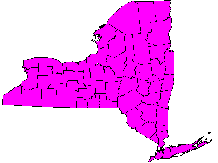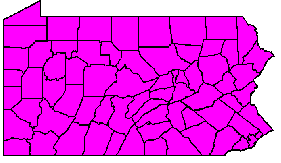Northern Two-lined Salamander
Eurycea b. bislineata
Bradford County, PA
Identification- 2.5-4.5" (6.5-12 cm) A medium sized lungless
salamander with a yellow to brown back and dark sides. Often a small
amount of spotting in the back color. Underside is solid yellow.
Strongly keeled tail. Larvae.
Similar Species- Mountain
Dusky Salamander is similar, but has hind feet larger than front feet,
large paratoids, pale line from eye to mouth.
Range- Two-lined Salamanders are found throughout New York and
Pennsylvania.
 |
 |
Habitat- Running water. Found in a wide variety of springs, streams, rivers, etc. Most often found in areas with a rock bottom.
Reproduction- Mating occurs early spring. Females attach the eggs individually to the underside of rocks and lay in late May to mid July. Females tend the eggs and may nest communally with one or more individuals taking care of the egg mass. The number of eggs is highly variable and can number from 15 to 96. The average clutch size in New York is 30-45. Hatching occurs in late June to early July and the young are 1/2" long. Transformation can take as little as one or as long as three years and occurs at a length of 1 3/4".
Northern Two-lined Salamander
Eurycea b. bislineata
Tioga County, NY
General Characteristics-
One of the most common species in our area
Two-lined Salamanders can be found in most areas where there is proper
habitat. Adults seldom stray far from water and do not hesitate to
swim to avoid capture. Larvae are easily found by flipping rocks
in woodland streams. Adults are very territorial toward others of
their species and defend their shelters by aggressive postures or biting.
Still population densities are high. Two-lined Salamanders are preyed
upon by a wide variety of living things, from Screech Owls to Garter
Snakes and Spring Salamanders.